Pteridophyta: Definition, Characteristics, Structure, Habitat, Classification, Examples
Ferns or pteridophyta are one of the most diverse plant species with a very wide distribution.
This type of plant is spread in almost all corners of the world, except in areas of eternal snow or dry areas (deserts).
The total known species of ferns is almost 10,000 (estimated 3000 of which grow in Indonesia) and most of them grow in the humid wet tropics.
For those of you who want to study this fern or pteridophyta, please take a good look at the reviews below.
Table of contents
Definition of Pteridophyta
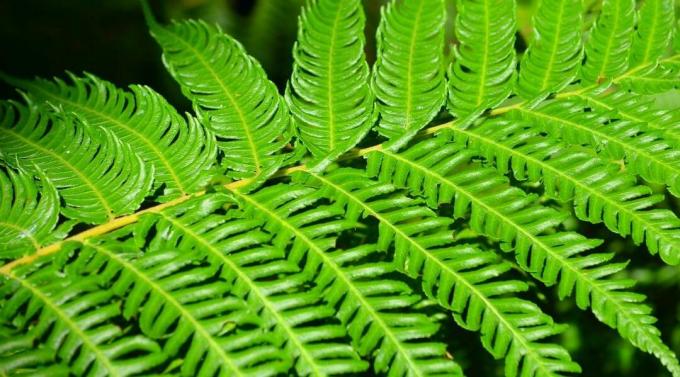
1. Generally
Ferns or also commonly referred to as ferns are a group of plants that have a network of xylem and phloem vessels, but do not have seeds.
This type of plant uses spores as a means of generative propagation.
2. According to Expert
In the opinion of Kinho who is a researcher from the Manado Forestry Research Institute, he believes that pteridophyta is a division plants that already have a true vascular system (kormus), which means the body can be divided into three main parts, namely roots, stems, and leaf.
3. Origin of Name
Ferns (pteridophyta) itself comes from the Greek word Pteron which means feathers, and phyton which means plant.
This pteridophyta is a group of plantae whose bodies have shaped cormus / have roots, stems, and true leaves. Although there are still several groups of nails whose body structure is not yet complete.
4. Morphology
Ferns (pteridophyta) are multicellular and eukaryotic organisms. In general, they already have clear roots, leaves, and stems (kormophyta).
5. Other name
Ferns are also called vascular plants (tracheophyta) because they have transport vessels.
In this one plant, it tends to be unable to stand the limited water conditions, maybe it will follow the behavior its ancestors in the Carboniferous period, which is also known as the golden age of ferns because it dominates the existing forests on earth.
Fossilized plant forest litter at that time is now being mined as a source of coal.
One of the members from Pteridophyta is the class Lycopodiinae (wire nails / vines) which are wild plants on roadsides, shrubs, and forests.
Characteristics of Pteridophyta
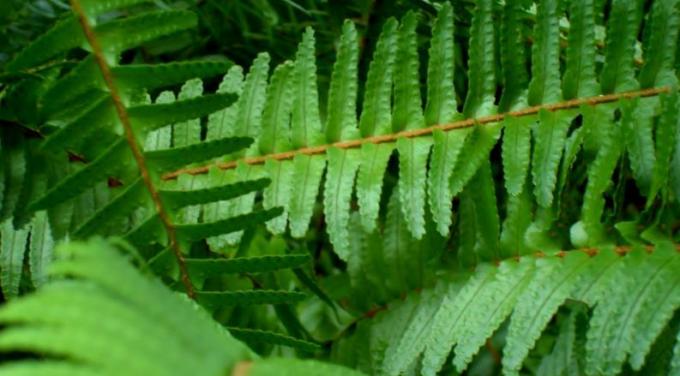
Ferns have a very distinctive arrangement, so it will be very easy to distinguish them from other types of plants.
The following are some of its characteristics, including:
- Reproduce by using spores that are created in the sporangium, its position is on the ventral surface / in the leaf axils.
- The male reproductive organs of ferns are referred to as antheridia, while the female reproductive organs are known as archegonia.
- The external appearance of this plant is in the form of shrubs, trees, vines, epiphytes, hydrophytes, floats, and creepers.
- The young leaves will roll up like a violin handle.
- Has a vascular bundle in the form of xylem and phloem.
- It can be distinguished which roots, stems, or leaves.
- The main body of ferns is the sporophyte.
- Experiencing metagenesis.
Pteridophyta Structure
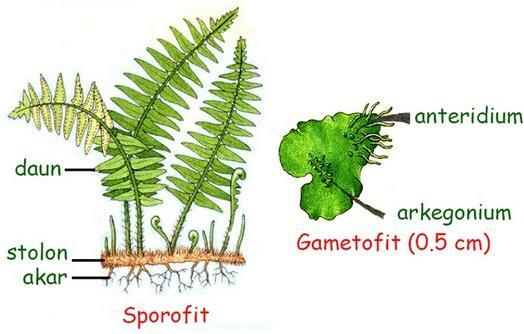
Below is the structure that exists in pteridophyta, including:
- Multicellular and eukaryotic organisms (cells have a nucleus).
- Having true roots, stems, and leaves and also spores, they are called spore cormophyta.
- The roots are fibrous and have a calyptra (root cap) at the ends. The root tissue of this one fern is composed of the epidermis, cortex, and central cylinder.
- The stem of this one plant is composed of epidermal tissue, cortex, and central cylinder. Inside the central cylinder has a vascular bundle (vessels) that have an important role in its life cycle.
- The leaves are composed of epidermal tissue, mesophyll, and vascular tissue.
- Able to reproduce sexually and asexually in a continuous cycle (metagenesis).
- Does not produce seeds.
Habitat for Ferns
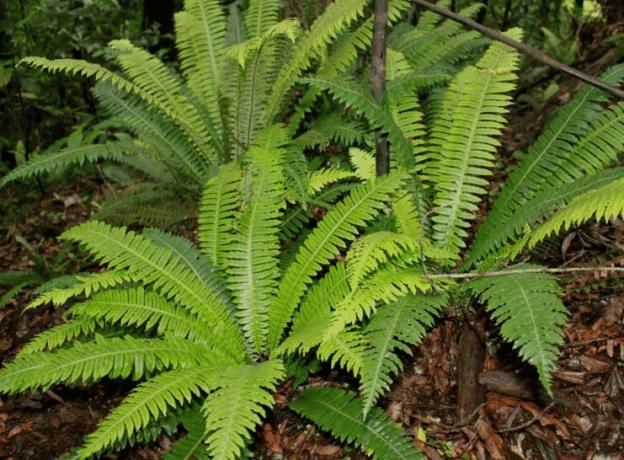
The habitat of ferns is on land, especially in the underground layer in the lowlands, coasts, slopes mountains, 350 meters above sea level, especially in humid areas, and some are epiphytic (attached) with other plants.
These ferns are also included in photoautotrophs.
There are also ferns that live on the water (for example, Azolla pinnata and Marsilea crenata). However, in general, these ferns include terrestrial plants (land plants).
The following are several factors that can affect the growth of ferns, including the following:
- Protection from wind and too strong light.
- Light levels are useful for photosynthesis.
- Mineral nutrient content in the soil.
- Water content in soil and air.
- Optimum temperature.
Not all of the factors above have an effect, but it depends on the type of fern.
Survive not only on a fern in an area, but also depends on the resistance of the gametophyte, whether it will develop naturally in its environment or not.
Similar to higher plants, ferns also grow in their respective environments (usually humid places).
Some nails are able to survive in extreme areas such as dry and hot environments. And some of them are even able to grow in desert areas.
Ferns position themselves precisely according to their niche, moist air, moist soil, light intensity, and so on. Rarely do ferns live outside their niche.
Pteridophyta Reproduction
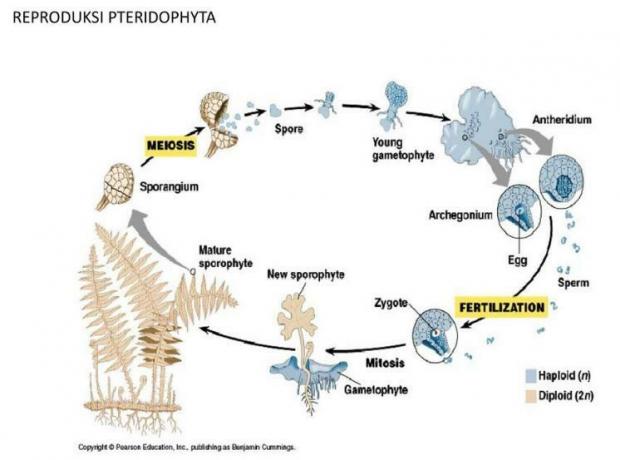
Reproduction of ferns consists of 2 (two) different phases, namely the vegetative phase and the generative phase.
In vegetative reproduction, ferns use rhizomes to create spores. While the generative phase aims to form a gamete.
This fern undergoes alternation of offspring (metagenesis) which is an alternation of offspring between the sporophyte (spore-producing) generation and the gametophyte (gamete-producing) generation.
The following is the metagenesis process of ferns:
1. Sporophyte Phase
- Spores are produced by the presence of a spore box called a sporangium
- The sporangium then gathers in a body called the sorus on the sporophyte leaf.
- The spores then leave the sporangium and if they fall in a suitable location, fertilization will take place and form a zygote
- The zygote will then develop into a sporophyte and will develop into an adult sporophyte.
2. Gametophyte Phase
- In the gametophyte generation, the prothallium will form the antheridium as the male genitalia and produce spermatozoa while the archegonia which becomes the female genitalia will produce Ovum.
- The result of the fusion of the sperm with the ovum will produce a zygote which will then grow into a new fern with a structure of roots, stems, and leaves.
Fern Reproductive Cycle
After knowing the reproduction of ferns, then you must know the cycle of reproduction by looking at the picture below:
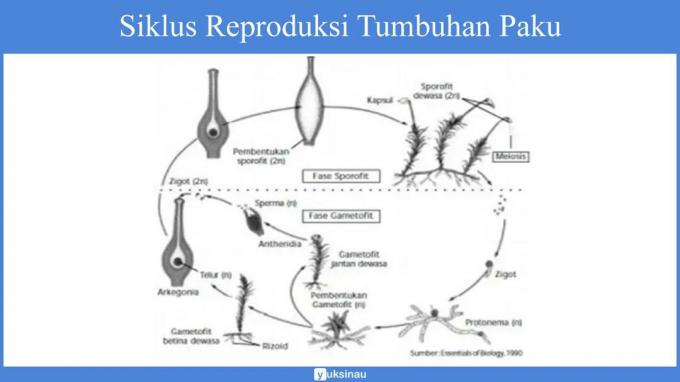
Based on several types of spores produced, several types of ferns are known, such as homosporous ferns, transitional ferns, and heterosporous ferns.
Here's a full explanation:
1. Homosporous nails
Is a type of nail that can only produce male spores or female spores.
Examples of homosporous nails are Lycopodium or wire nails.
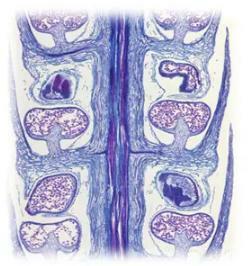
Homosporous Fern Life Cycle:
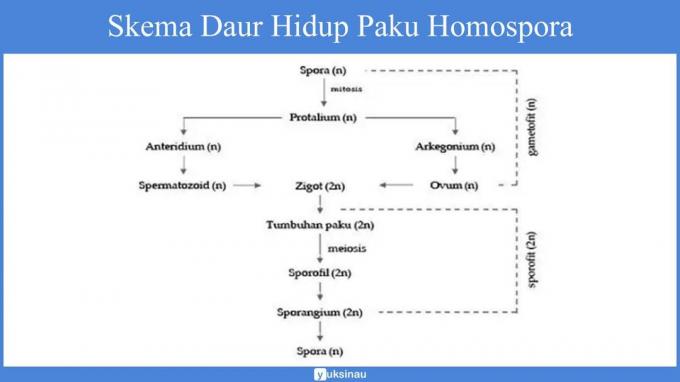
2. Transition nails
Is one type of nail that is able to produce two kinds of spores, namely male spores and female spores. However, the spores produced have the same shape and size.
An example of a transitional nail is the Equisetum debile.
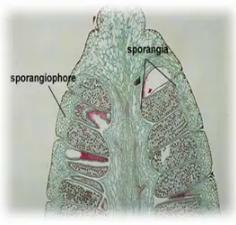
Transition Spike Life Cycle:

3. Heterosporous Nails
Is a type of nail that is capable of producing spores of different types and sizes, namely male spores and female spores.
Male spores have a smaller size, or commonly referred to as microspores, and female spores tend to be larger in size, or commonly referred to as macrospores.
Examples of heterosporous ferns are Marsilea Crenata (clover) and Selaginella Wildenowii.
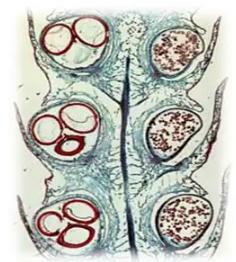
Heterosporous Fern Life Cycle:
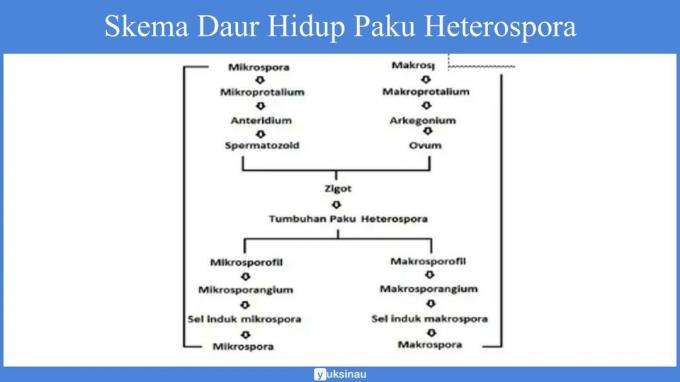
Classification of Ferns
According to the narrative of Gembong Tjitrosoepomo in his book entitled Plant Morphology, 2005, pteridophyta have heterogeneous species, both in terms of their habitat and methods his life.
Well, The fern itself is classified into several types, including:
- True ferns (pteropsids).
- Ancient ferns (psilopsida).
- Horsetail (sphenopsida).
- And wire nails (lycopsida).
The following is an explanation for each of the above classifications, including:
1. True Nails (Pteropsida)
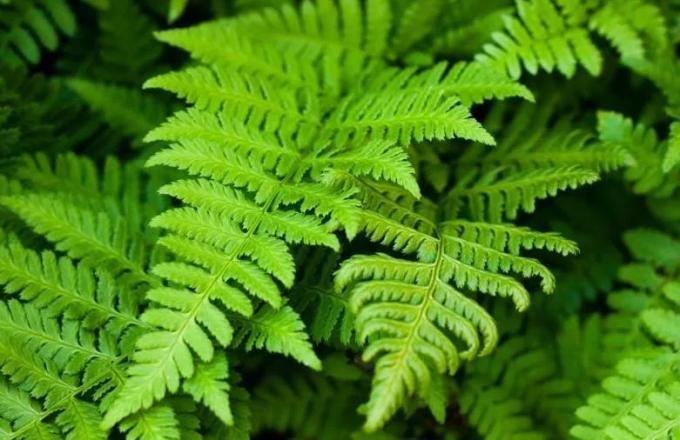
Pteropsida or also known as true ferns are also commonly referred to as ferns. Called the true word because this type of fern has true roots, stems, and leaves.
In general, for young leaves the shape will be curled.
Well, Among several types of ferns, this one is the most abundant species.
True ferns grow above the ground with an upright shape and some are buried underground.
The spread of spores in this type of plant is assisted by wind to various areas.
Examples of true ferns:
- Adiantum cuneatum (supplier)
- Asplenium nidus (horse's nest fern).
2. Ancient Nails (Psilopsida)
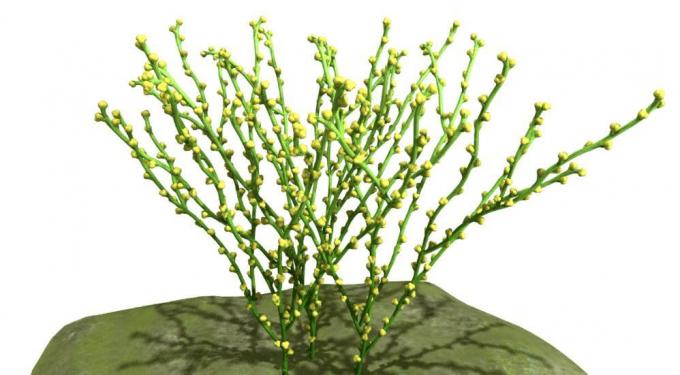
As the name suggests, ancient ferns are a type of fern whose existence is almost extinct.
This one plant has existed since ancient times and until now is often found in fossil form.
For the form of ancient nails themselves, the leaves are small, some are even leafless.
Interestingly, this ancient fern is also often referred to as a bare nail, because the sporangium is open.
This type of fern does not have true stems, roots and leaves. However, it still has xylem and phloem transport vessels.
Although many types of ancient ferns are found in fossil form such as Rhynia major, there is still a species that still exists today called Psilotum.
Examples of ancient ferns:
- Psilotum nudum
- Rhynia major.
3. Horsetail (Sphenopsida)
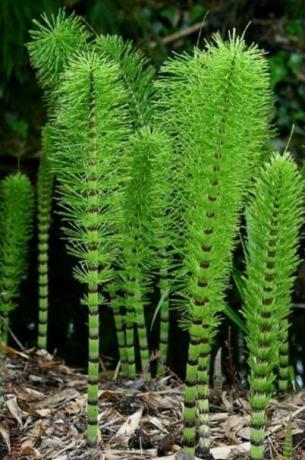
This type of fern is also called a horsetail, because its shape is similar to an elongated tail.
One-in nails can also be years old. For the shape itself, it has a green stem, segmented, hollow in the middle, and branched.
The hole in the center of the stem serves to help the process of photosynthesis as a substitute for leaves.
Examples of horsetail plants:
- Equisetum arvense.
4. Wire Nails (Lycopsida)
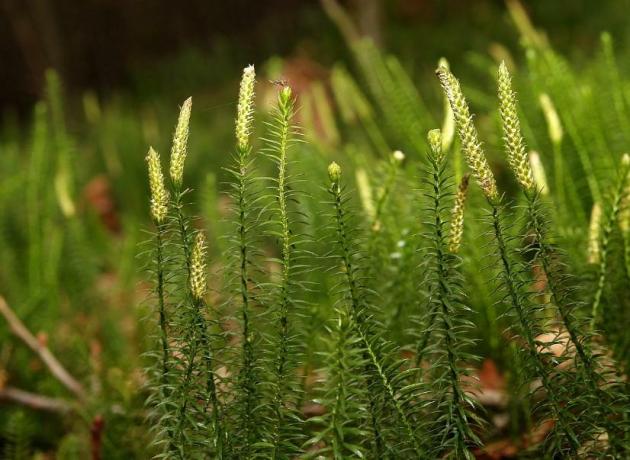
Wire nails or also known as lycopsida are a type of fern that enter into heterospores, which can produce two kinds of spores (microspores and macrospores).
The characteristics are also in accordance with the name, which has small leaves with a spiral arrangement and has a stem that resembles a wire.
The sporangium will appear in the axils of the leaves and gather to form a strobilus. Usually. These wire spikes live on land.
Examples of wire nail plants:
- Lycopodium clavatum.
Pteridophyta Classification Picture:
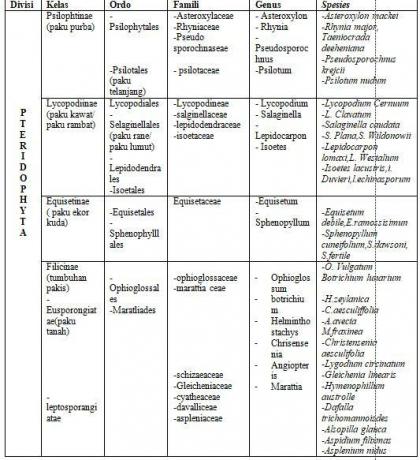
Differences in Class Pteridophyta (Psilophtinae and Lycopodiinae)
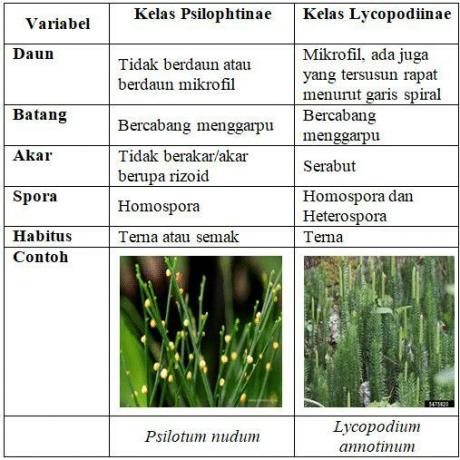
Benefits of Pteridophyta
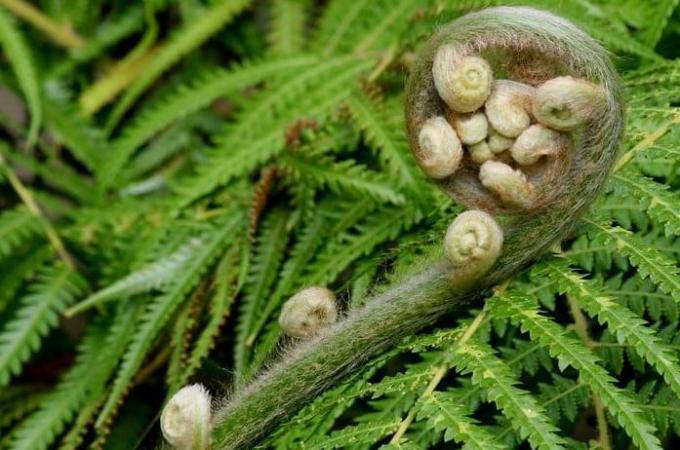
Here are some of the benefits or roles of pteridophytes that you need to know, including:
1. Vegetables
Ferns can be used as vegetables such as Marsilea crenata (clover) or Pteridium aquilinum (garuda ferns).
2. Decorative plants
Ferns can be used as ornamental plants to beautify a building or house.
Examples are Asplenium nidus (bird's nest fern), Adiantum cuneatum (supplier), and Platycerium biforme (Simbar deer fern).
3. Drugs
In addition, ferns can also be used as a diuretic medicine such as equisetum (horse nail) and also used as a wound medicine such as sambilnella.
4. Green Manure
Ferns are also widely used as green manure such as Azolla pinnata which has a symbiotic relationship with Anabaena azollae which can bind free N2 gas in the air.
5. Building material
Ferns can be used as a mixed material for making building poles such as Alsophila glauca.
In addition to the various benefits above, this fern also has a role like ancient fern fossils which are the main source in the formation of coal.
